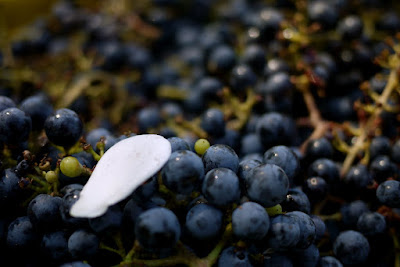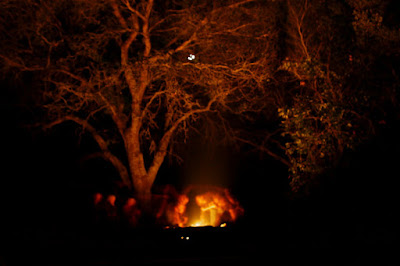 David and John in the Cave, trying to keep warm as they examine the Chardonnay fermenting in barrel (35mm film image)
David and John in the Cave, trying to keep warm as they examine the Chardonnay fermenting in barrel (35mm film image) John wishes that he'd made the whole crop into wine under our label, rather than selling most of it to Newton Winery (35mm film image)
John wishes that he'd made the whole crop into wine under our label, rather than selling most of it to Newton Winery (35mm film image) Our ancient truck hauling 18 empty half-ton bins. In the distance, the Napa Wine Train and the hills east of St. Helena
Our ancient truck hauling 18 empty half-ton bins. In the distance, the Napa Wine Train and the hills east of St. Helena On the Silverado trail during a cool and cloudy Autumn afternoon. The rain threatens, but we were ready to get our work done just in time.
On the Silverado trail during a cool and cloudy Autumn afternoon. The rain threatens, but we were ready to get our work done just in time.













































